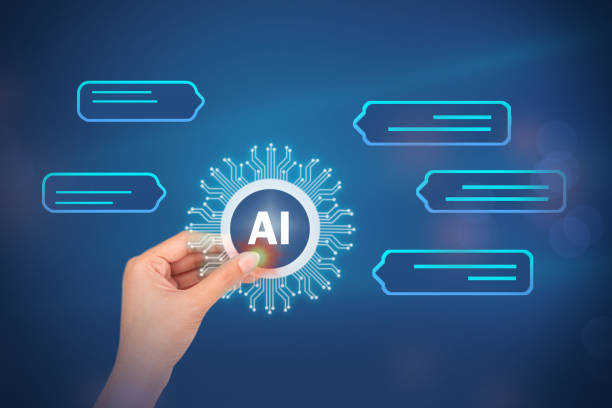What is an AI Robot and How Does it Work?
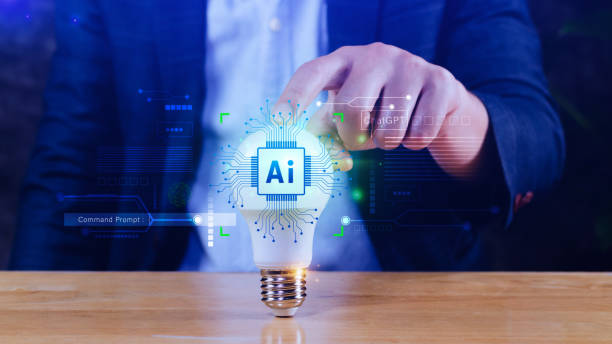
#AI robot, a combination of two distinct fields: robotics and artificial intelligence (AI).
Robotics deals with the design, construction, operation, and application of #robots, while artificial intelligence strives to enable machines to perform tasks that typically require human intelligence.
Artificial intelligence enables the robot to understand, learn, reason, and make decisions.
An AI robot is not just a pre-programmed machine; it is capable of interacting with its environment, learning from its experiences, and adapting its behavior based on new information.
The architecture of an AI robot includes sensors (to receive information from the environment), processors (to analyze data and make decisions), and actuators (to perform physical actions).
Artificial intelligence algorithms, such as machine learning and neural networks, help the robot identify patterns, make predictions, and choose the best action in any given situation.
The operation of an AI robot is based on a feedback loop.
Sensors collect information from the environment; this information is transmitted to the processor, which analyzes the data and makes decisions using AI algorithms; then, actuators perform physical actions based on these decisions.
The result of this action is again received by the sensors, and this cycle continues.
This process allows the robot to continuously learn and improve its performance.
AI robots have applications in various industries, including manufacturing, medicine, customer service, and agriculture.
They can perform dangerous, repetitive, or complex tasks, increase productivity, and improve the quality of products and services.
The use of AI robots is increasingly expanding, and they are expected to play a more significant role in our lives in the future.
For more information on #robotics, you can refer to this link.
Is your company’s website as professional and trustworthy as it should be? With specialized corporate website design by Rasawweb, create an online presence that reflects your credibility and attracts more customers.
✅ Build a powerful and professional image for your brand
✅ Convert visitors into real customers
⚡ Get a free consultation now!
Amazing Applications of AI Robots in Various Industries
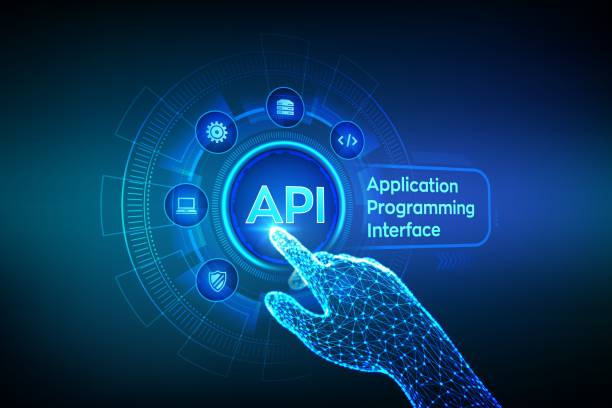
AI robots are rapidly penetrating various industries and offering extensive applications.
In the manufacturing industry, AI robots are used for repetitive and precise tasks, such as assembling parts and quality inspection.
These robots can work continuously and tirelessly, reduce human errors, and increase productivity.
In the medical industry, AI robots play a role in surgery, disease diagnosis, and patient care.
Surgical robots can operate with higher precision than human surgeons, reducing damage to healthy tissues.
Diagnostic robots can analyze medical images and identify disease symptoms.
Patient care robots can assist patients with daily tasks and monitor their condition.
In the customer service industry, AI robots are used as virtual assistants and chatbots.
These robots can answer customer questions, solve their problems, and provide necessary information.
In the agriculture industry, AI robots are used for planting, harvesting, and caring for crops.
These robots can work with higher precision than human farmers, optimize water and fertilizer consumption, and increase crop yields.
Furthermore, AI robots have diverse applications in other industries such as transportation, security, education, and entertainment.
For example, AI robots are used in autonomous vehicles to navigate and prevent accidents.
In security systems, AI robots can identify suspicious patterns and issue necessary alerts.
In education, AI robots can be used as private tutors and teaching assistants.
In entertainment, AI robots can make video games smarter and more engaging.
To better understand the impact of artificial intelligence on daily life, you can read this article.
Current Challenges and Limitations of AI Robots

Despite significant advancements in the field of AI robots, there are still challenges and limitations that need to be addressed.
One of the main challenges is the high cost of developing and deploying these robots.
Designing, building, and programming AI robots requires extensive expertise and resources.
Additionally, maintaining and repairing these robots is also costly.
Another challenge is the complexity of AI algorithms.
Training and optimizing these algorithms requires a large amount of data and can be time-consuming and difficult.
Furthermore, AI algorithms can make errors and incorrect decisions.
These errors can lead to serious problems, especially in sensitive applications such as medicine and transportation.
Another limitation is the limited ability of AI robots to understand and interact with complex and unpredictable environments.
AI robots usually perform best in controlled environments with specific instructions.
However, in real-world environments, which are subject to many changes and ambiguities, they may encounter difficulties.
Furthermore, AI robots typically lack empathy, creativity, and intuition.
These characteristics are essential for performing tasks that require understanding human emotions and solving complex problems.
Nonetheless, researchers are striving to overcome these challenges and limitations.
They are developing more advanced AI algorithms, more accurate sensors, and new methods for robots to interact with their environment.
AI robots require further research and development in the field of machine learning to advance.
For more information in this area, you can refer to this website.
| Challenge | Description |
|---|---|
| High Cost | Developing, deploying, and maintaining AI robots is expensive. |
| Algorithm Complexity | Training and optimizing AI algorithms is difficult. |
| Limited Environmental Understanding | Robots face difficulties in complex environments. |
| Lack of Human Traits | Robots lack empathy, creativity, and intuition. |
What will be the Future of AI Robots?
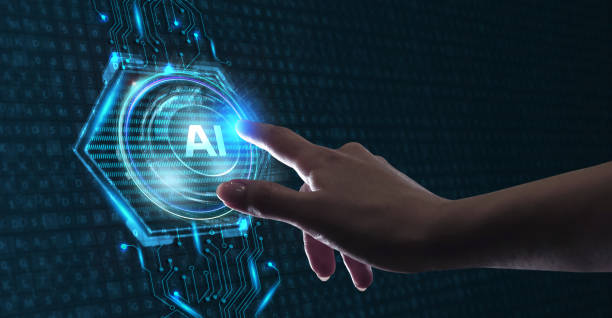
The future of AI robots is very bright and full of potential.
Continuous advancements in the fields of artificial intelligence, robotics, and sensors enable the creation of robots with more advanced capabilities and broader applications.
In the future, AI robots are expected to be capable of performing more complex tasks, interacting more naturally with humans, and performing well in unpredictable environments.
One of the important trends in the future of AI robots is the development of autonomous robots.
These robots will be able to make decisions and perform their tasks without human intervention.
Autonomous robots will have applications in various industries such as transportation, agriculture, and space exploration.
Another trend is the development of collaborative robots.
These robots will be able to work alongside humans and assist them in performing tasks.
Collaborative robots will find applications in manufacturing, medicine, and customer service industries.
Furthermore, AI robots are expected to play a more significant role in our daily lives.
Household robots can help us with chores, care for children and the elderly, and ensure home security.
Personal robots can assist us in learning, working, and leisure.
However, the development of AI robots requires attention to ethical and social issues.
It must be ensured that these robots act for the benefit of society and respect individuals’ rights and privacy.
AI robots will revolutionize the future and play a more prominent role in our lives.
For the latest news in this area, you can refer to this news link.
The Impact of AI Robots on the Job Market and Economy

The impact of AI robots on the job market and economy is a controversial topic.
Some experts believe that AI robots will lead to job losses and increased economic inequality.
They argue that robots will be able to automate many tasks currently performed by humans, resulting in many people losing their jobs.
However, other experts believe that AI robots will create new jobs and boost economic growth.
They argue that robots can increase productivity, reduce costs, and provide new products and services.
This could lead to an increased demand for labor, especially in fields such as artificial intelligence, robotics, and engineering.
Furthermore, robots can perform dangerous, repetitive, and difficult tasks, allowing humans to focus on more creative and strategic endeavors.
The impact of AI robots on the job market and economy is likely to be complex and multifaceted.
Some jobs may be eliminated, while new ones are created.
There may also be a need for changes in workforce skills and training to allow individuals to adapt to new technologies.
To better adapt to changes in the job market, it is suggested to acquire new skills view here.
Governments, businesses, and individuals must prepare for these changes and develop policies and programs that help mitigate negative effects and enhance the positive impacts of AI robots.
Ethical and Social Issues Related to AI Robots

The development and use of AI robots raise important ethical and social issues.
One of the main issues is accountability.
If an AI robot makes a decision that leads to harm, who will be responsible? Is the robot’s manufacturer, its programmer, or the user who operates the robot responsible? These questions require careful consideration and the formulation of appropriate laws and regulations.
Another issue is privacy.
AI robots typically collect a lot of information about their users.
This information can include personal details, habits, interests, and even emotions.
How can this information be protected and prevented from misuse? Developing strong privacy policies and utilizing encryption technologies can help address this problem.
The third issue is discrimination.
AI algorithms may inadvertently be discriminatory.
This can be due to the use of inappropriate training data, bias in algorithm design, or cultural differences.
Discrimination in AI algorithms can lead to unfair decisions and harm to specific groups of people.
To prevent discrimination, training data must be carefully selected, algorithms regularly reviewed, and insights from various experts utilized.
Furthermore, issues related to transparency, accountability, and fairness must also be addressed.
AI robots should be designed so that their operations are understandable, their decisions explainable, and they treat all individuals fairly.
For further reading on the ethical issues of artificial intelligence, you can refer to this website.
AI robots must be developed with ethics in mind.
How AI Robots Learn and Are Trained

Learning and training AI robots is a complex process that requires the use of various machine learning algorithms and appropriate training data.
One common learning method is supervised learning.
In this method, the robot is provided with labeled training data.
For example, if we want to train a robot to recognize cat images, we must provide it with a set of cat images along with the label “cat”.
By analyzing this data, the robot learns patterns and features associated with cats and can then recognize new images.
Another method is unsupervised learning.
In this method, the robot is provided with unlabeled training data.
The robot must automatically identify patterns and structures within the data.
This method is useful for discovering new knowledge and organizing data.
The third method is reinforcement learning.
In this method, the robot receives rewards or penalties by performing various actions in an environment.
The robot tries to find strategies that yield the most rewards by learning from its experiences.
This method is suitable for training robots to perform complex and interactive tasks.
Choosing the appropriate learning method depends on the type of task, available data, and computational resources.
Additionally, attention must be paid to issues related to data quality, bias, and generalizability.
Training data must be accurate, complete, and diverse for AI robots to learn correctly.
Also, bias in the data must be prevented to avoid the robot making unfair decisions.
For more information on machine learning, you can refer to Wikipedia.
Introducing the Best Platforms and Tools for AI Robot Development

Developing AI robots requires the use of appropriate platforms and tools.
Fortunately, today various platforms and tools are available to facilitate this process.
One popular platform is ROS (Robot Operating System).
ROS is an open-source software framework that provides a set of tools, libraries, and conventions for building robots.
ROS enables developers to easily connect different modules, integrate hardware and software, and develop complex robots.
Another platform is TensorFlow.
TensorFlow is an open-source software library for machine learning developed by Google.
TensorFlow provides powerful tools for building and training machine learning models.
These tools can be used to develop AI robots capable of image recognition, natural language processing, and performing complex tasks.
Additionally, other platforms such as PyTorch, Keras, and scikit-learn are also useful for developing AI robots.
The choice of platform and tools depends on the specific project requirements, developers’ skills, and available resources.
AI robots will perform better with these tools.
| Platform/Tool | Description | Application |
|---|---|---|
| ROS | Open-source software framework for building robots | Hardware and software integration, complex robot development |
| TensorFlow | Open-source software library for machine learning | Image recognition, natural language processing |
| PyTorch | Machine learning library | Research and development in deep learning |
| Keras | API for building neural networks | Simplifying the process of building machine learning models |
Are you tired of losing business opportunities due to not having a professional corporate website?
Rasawweb, with professional corporate website design, helps you:
✅ Build a powerful and reliable image for your brand
✅ Convert website visitors into loyal customers
⚡ Get a free consultation now!
How to Build an AI Robot: A Step-by-Step Guide
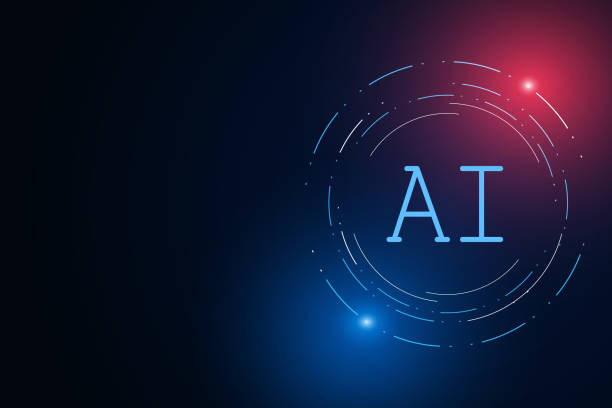
Building an AI robot is an exciting and challenging project.
Here is a step-by-step guide to help you along the way. The first step is to define the goal.
Before starting to build the robot, you need to specify your objective.
What do you want the robot to do? Do you want to build a household robot, an industrial robot, or an educational robot? Defining the goal helps you determine what hardware, software, and skills you will need.
The second step is hardware selection.
Robot hardware includes sensors, actuators, processors, and a power supply.
Sensors are used to collect information from the environment.
Actuators are used to perform physical actions.
Processors are used to analyze data and make decisions.
The power supply is used to provide energy to the robot.
The third step is software selection.
Robot software includes the operating system, machine learning libraries, and application programs.
The operating system is used to manage the robot’s hardware.
Machine learning libraries are used to train the robot.
Application programs are used to perform specific tasks.
The fourth step is developing AI algorithms.
AI algorithms help the robot identify patterns, make predictions, and make decisions.
You can use pre-existing algorithms or develop your own.
The fifth step is testing and optimization.
After building the robot, you need to test it and optimize its performance.
This process involves identifying and fixing bugs, adjusting parameters, and improving algorithms.
With effort and perseverance, you can build a functional AI robot.
To start, you can begin with small and simple projects and gradually move on to more complex ones.
Successful Case Studies in the Field of AI Robots
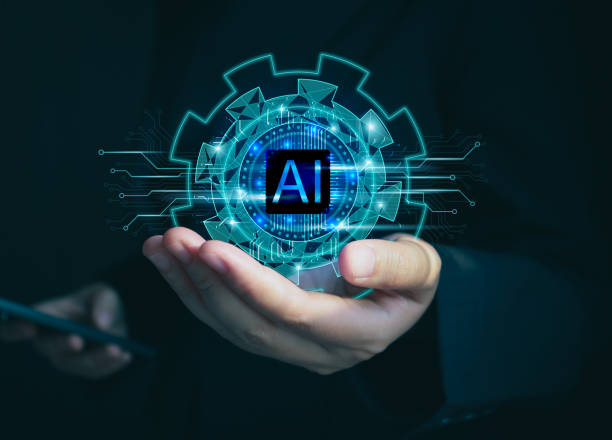
Numerous case studies demonstrate that AI robots can be successful in various industries.
One such case is the use of AI robots in warehousing.
Companies like Amazon use AI robots to move goods, sort packages, and manage inventory.
These robots can work continuously and tirelessly, reduce human errors, and increase the speed and accuracy of warehousing operations.
Another example is the use of AI robots in healthcare.
Surgical robots can operate with higher precision than human surgeons, reducing damage to healthy tissues.
Nurse robots can assist patients with daily tasks and monitor their condition.
Pharmacy robots can dispense medications with higher accuracy and prevent medication errors.
In the agricultural industry, AI robots are used for planting, harvesting, and caring for crops.
These robots can work with higher precision than human farmers, optimize water and fertilizer consumption, and increase crop yields.
These case studies show that AI robots can increase productivity, reduce costs, and improve the quality of products and services.
However, the success of an AI robot project requires careful planning, selecting appropriate technology, workforce training, and attention to ethical and social issues.
Frequently Asked Questions
| Question | Answer |
|---|---|
| What is an AI robot? | An AI Robot is a machine capable of perceiving its environment, reasoning, learning, and making decisions to perform tasks autonomously. |
| What is the difference between regular robots and AI robots? | Regular robots perform repetitive tasks based on pre-programming, whereas AI robots can learn from experience, interact dynamically with their environment, and even behave in ways that mimic human intelligence. |
| What are the main applications of AI robots? | They are used in industries (manufacturing, assembly), medicine (surgery, diagnosis), services (customer support, domestic), exploration (space, underwater), and many other fields. |
| What technologies are used in the creation of AI robots? | Machine Learning, Computer Vision, Natural Language Processing, Deep Learning, and Robotics are among the key technologies. |
| Can AI robots have emotions? | Currently, robots do not possess emotions in the human sense. They can identify emotions and react to them, but they do not experience emotions themselves. |
| What are the main challenges in developing AI robots? | Safety, reliability, ethics, autonomy, adaptability to complex environments, and natural human interaction are important challenges. |
| How are AI robots trained? | They are usually trained using large volumes of data, machine learning algorithms, and deep learning to identify patterns and make decisions. |
| Examples of AI robots in daily life? | Smart robotic vacuum cleaners, customer support chatbots, autonomous cars, and surgical robots in hospitals. |
| Are AI robots a threat to human jobs? | Some repetitive jobs may be automated, but simultaneously, robots can increase productivity and create new jobs in the development, maintenance, and supervision of these systems. |
| How is the future of AI robots predicted? | They are expected to become smarter, more autonomous, and capable of performing more complex tasks, engaging in closer interaction with humans in various environments. |
And other advertising services by Rasawweb advertising agency:
- Smart SEO: Designed for businesses looking to increase click-through rates through marketing automation.
- Smart Brand Identity: Professional optimization to increase website visits by customizing user experience.
- Smart Direct Marketing: Designed for businesses looking to increase sales by using real data.
- Smart Link Building: An effective tool for campaign management with SEO-driven content strategy.
- Smart Custom Software: A combination of creativity and technology to increase click-through rates using real data.
And over hundreds of other services in internet advertising, advertising consultation, and organizational solutions.
Internet Advertising | Advertising Strategy | Advertorials
Resources
The Future of AI Robots on Digikala Mag
Comprehensive Guide to AI Robots on Zoomit
The Impact of Artificial Intelligence on Daily Life – IRNA
Advances in Artificial Intelligence and Future Challenges – ISNA
? Ready to revolutionize your business in the digital world? Rasawweb Afarin Digital Marketing Agency paves the way for your greater visibility by offering comprehensive services including SEO-optimized website design, search engine optimization, and content marketing.
📍 Tehran, Mirdamad Street, Next to Central Bank, Southern Kazeroun Alley, Ramin Alley, No. 6

